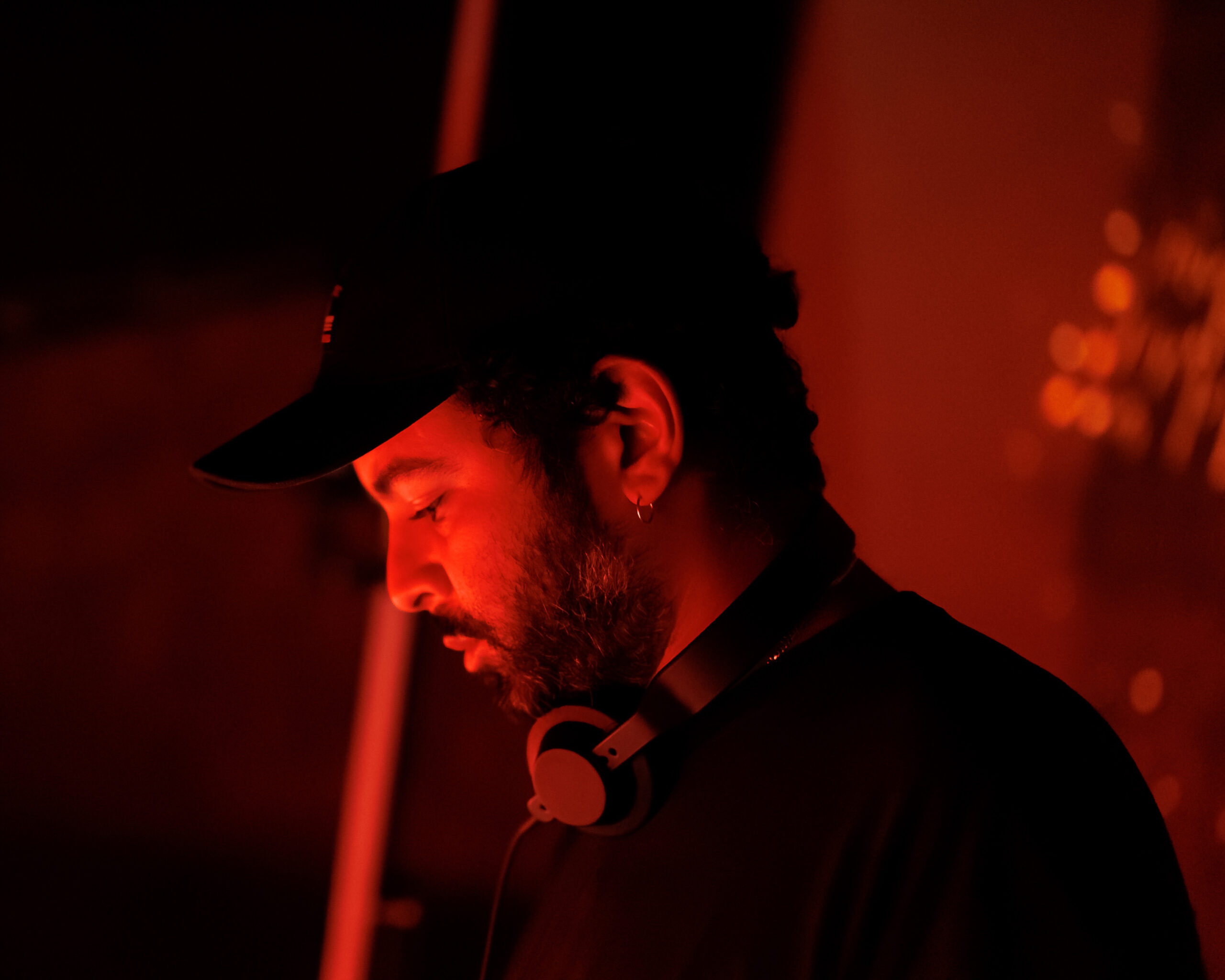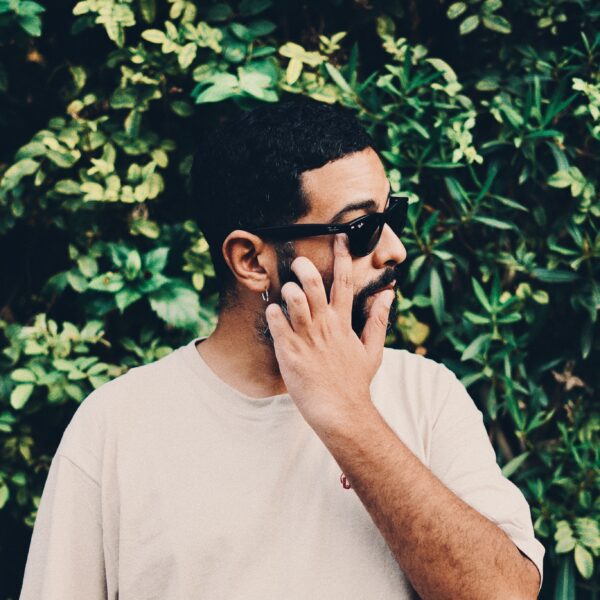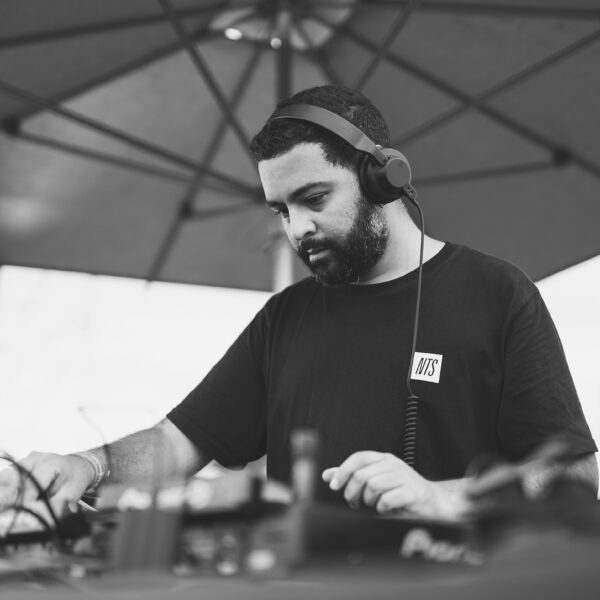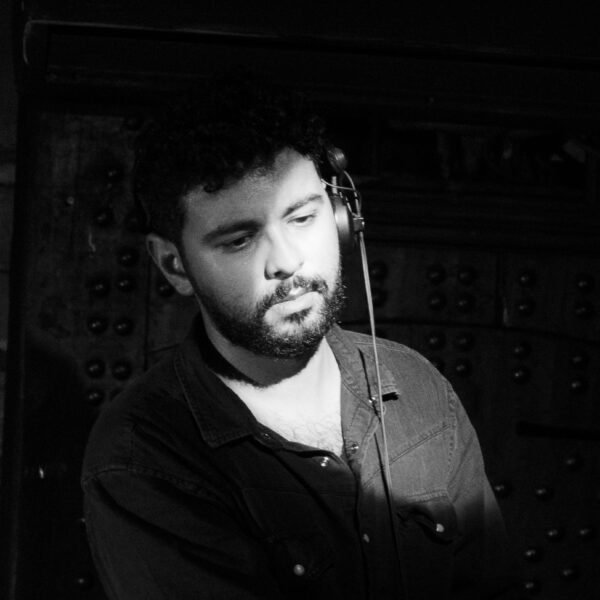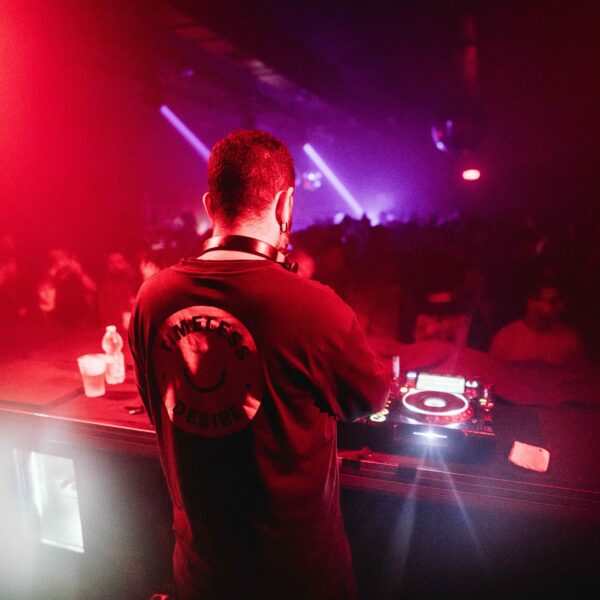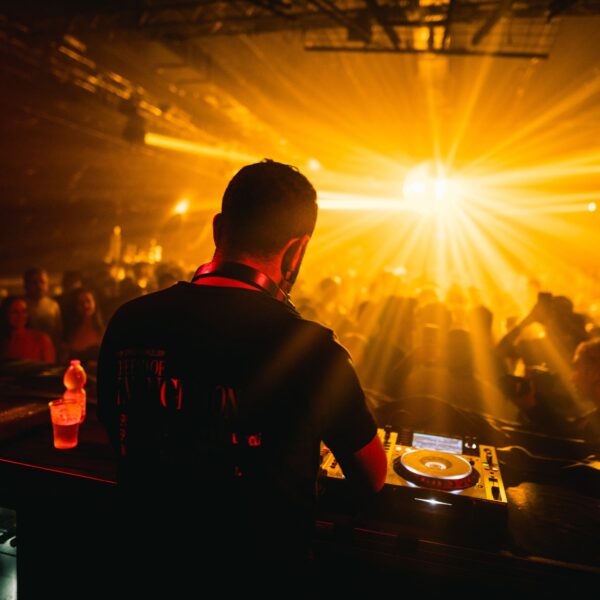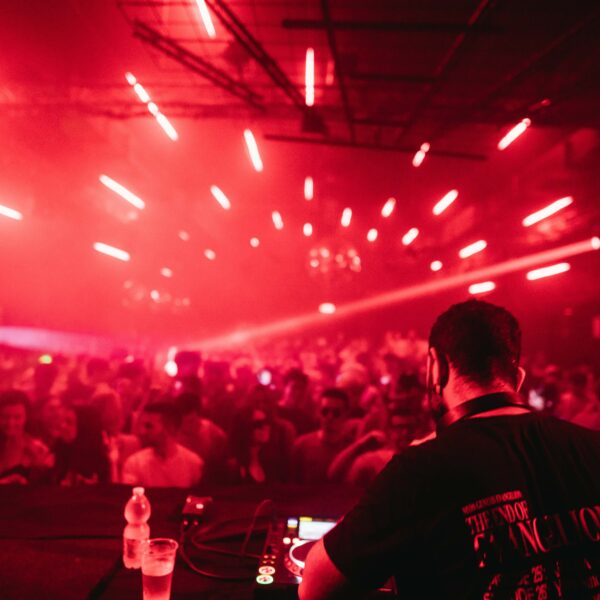Talking to Daox one of the co-creators and DJs behind MOGA in Morocco about the extended Moroccan scene and his own history with electronic music.
Essaouira, Morocco is a city steeped in cultural- and musical heritage. It was literally the last port of call for generations of African men and women before they were bonded into slavery, creating a melting pot of African music traditions and taking it to new worlds like the Americas.
Today the former Portuguese port town has removed the shackles of its blighted history, but it continues those traditions with festivals dedicated to various styles and genres of music, extending way beyond those ritualistic traditions. From Jazz to Electronic music, Essauoira is a modern-day musical Babylon, a sonic metropolis where people gather annually for everything from traditional folk music to contemporary electronica.
Today, Essaouira is a fishing- and tourist town, with a social calendar filled with music festivals. One of the festivals is MOGA. The electronic music festival staked its claim in the city in 2016 and has become a touchstone for the electronic music scene in the region. Every year since their start – besides during covid – they’ve been bringing some of the best international DJs and artists to their intimate gathering for a largely Moroccan audience.
In 2024 they hosted the likes of Dixon, DJ Tennis, Paula Tape and Prins Thomas alongside events and activities that broaden the scope beyond the performance and spill out into the rest of the city. Since 2021 they’ve added a sister event in Portugal with the producers behind the festival bringing those dark historical links between the two countries to a new positive light through music.
One of the people behind the festival is Daox (Abdeslam Alaoui). The Moroccan DJ producer and club promoter has had more skin in the game than any other, having effectively helped build what constitutes a scene around Morocco through his various activities as DJ and club promoter. As the co-founder and main booker for MOGA, Daox continues to be a bridge between Morocco and the rest of the world.
It doesn’t go without its own sacrifices however and when I called him up the week after this year’s festival, he was still recovering from Bronchitis, and resting up. “I’ll be ok,” he assures as he prepares for his visit to Jaeger to play Oslo World this week. Memories of seeing some of his “favourite DJs” including “Prins Thomas and Rhadoo” are still fresh even if it was only for a moment during the busy haze of running the festival, and while questions of the festival linger, there is also a rich musical history behind Daox.
As a DJ he calls himself a student of the “groove school… when it’s groovy and it’s drummy and seamless.” With sets that drift between “House and old Techno,” Daox is an eclectic sort, coming from a time when the differences between genres were more fluid and it was all about that rhythm.
As such he continues to be a “Perlon addict,” playing with the subjective conventions into his own musical diatribe. Besides DJ and festival runner, he is also a producer and has worked under a string of different aliases in the past. His most recent release is a collaboration with Hip Hop artist Young Loun, where he created the haunting electronic atmospheres that embrace the rapper’s wavy vocals.
It might seem at odds for an artist and DJ hosting an electronic music festival, but what I soon discover is that nothing is as you’d expect with Daox, and his passion for music reaches as deep as the origins of music itself.
How was this year’s MOGA festival? We had Paula Tape play here almost directly after and she had only good things to say about it.
It was a big success, after we had to cancel last year because of the earthquake. We lost a lot of money last year, and people sometimes lose trust in these situations. You lose a bit of the momentum and hype and we had to rebuild.
Running a festival is not without its challenges, I’m sure. What was the impetus to take that risk and to start your own festival in the region?
I was running parties and I was running some residencies. I hosted a boiler room to bring James Holden, Floating Points, Biosphere and Vessel to Morocco alongside some local artists like Maâlem Mahmoud Guinia and Maâlem Mohamed Kouyou, who are big in Morocco.
At the same time I was playing in Morocco, but the parties weren’t that good, so I started hosting my own parties outside of the clubs, because the clubs were too commercial.
After that I became the artistic director of Pacha, Marrakech – totally by accident – and I completely changed the programming. I brought over big names like Shaun Reeves, Life and Death, Seth Troxler and Luciano. It helped to bring fresh music to Morocco, and bringing this underground music to clubs helped to shape the scene.
I left Morocco for Canada shortly after to study and I met my close friends & associate partners Benoit Geli & Matthieu Corosine, who wanted to do a festival in Morocco. We ended up in Essaouira.
It’s such an amazing location with stunning scenery and a lot of history.
It’s a beautiful city. Essaouira was a Portuguese harbour and a slave post. It’s really small, but they have a big cultural- and musical legacy. People like Santana and Jimi Hendrix would visit it back in the day and you also have Gnawa music. It’s an historical music that is played on the gimbri, which is like the precursor to the bass, and was played by the slaves and you can still hear them play this mystical music today. The city hasn’t lost its authenticity and its vibe and they have five different music festivals there throughout the year, but we decided to do something electronic.
What’s your main audience at MOGA, is it more local people?
It was always for local people. During the time we launched MOGA, all the festivals were more tourist festivals. It was more focussed on promoting it outside of Morocco. We always wanted to create a festival for Moroccans.
What is your capacity for the festival, because from the videos I’ve seen it looks very intimate, and people can get very close to their favourite DJ? It is a contrast from what we usually see, which is aeroplane hangars with a sea of people below a DJ two metres in the air.
It was our initial idea to keep MOGA intimate. We didn’t just want to bring in people to play. We wanted to create a hub, a rendezvous where it’s not just about seeing other artists. It’s an experience. For that reason it’s always going to be less than 5000 people in Morocco.
We can go to 10000, but it will lose its magic.
You don’t feel like you’d be tempted to grow it even bigger?
In Portugal we can go to 6000 people because it is on the beach. Activities and the city events will be bigger, but we want it to stay like this, although you never know.
Besides its historic links, what is the connection between Essaouira and Portugal?
The city in Portugal where we host MOGA is Almada which is a Moroccan-Portuguese city. We always wanted to do something in Portugal, but we never had the chance. During Covid we got together with our partners and they suggested we make it somewhere else, and Portugal was first on our list. It happened really fast. We met the ambassador for Portugal in Morocco, who was an old DJ, and opened the door to some people in Portugal. In one month or less, we were ready to go. Since 2021 we’ve been doing it every year. It has become a really big cultural exchange.
It’s something of a continuation of that shared cultural heritage of the past, but in a more positive light.
Exactly.
Is electronic music the main focus of MOGA?
I always call MOGA a contemporary dance music festival. It can be electronic or even tribal. In electronic music you can have many different styles, so it’s already quite vast. More so today as everything from Hip Hop to Rock music use more and more electronic components. Let’s just call it Dance music! (laughs)
Yes, you can dance to anything really. You mentioned that you were bringing in international artists to Marakech. Was there a big scene for that kind of thing back when you started?
The scene was already big in clubs, but it was different music. It was really mainstream. It was Swedish House Mafia and David Guetta, which wasn’t bad, but it was too focussed on this kind of music. Bringing fresher underground artists to clubs, also brought with it a legitimacy.
I grew up and came up through Psytrance festivals; we have a lot of Psytrance festivals in Morocco. But this music never stood a chance in clubs and you couldn’t really play it in bars. We couldn’t really reach more people, so when I started working at Pacha, bringing the kind of music that we considered more underground, the crowd got bigger and people became more curious.
Were there other people interested in that kind of music before this, or was this something you had to build as well?
Before Pacha, we had a collective called Runtomorrow. We were around 15 people but around Morocco you could find other similar collectives running parties. Every city had its own collective. Talents were always there, but the clubs and the bars weren’t following or believing in us. It was quite a challenge because you had to start from scratch. None of us had club experiences so we all figured it out by doing it.
I guess the internet would’ve helped, but this would have been an early internet, before social media?
It was the early internet. It wasn’t like now, when the internet is fast, you have instagram and information is readily available. We were sharing parties in forums before facebook. (laughs)
What is your own history with electronic, dance music?
When I was younger I used to watch tv to listen to this kind of music on channels like MTV and MCM. At night, MCM would play electronic music videos, like Aphex Twin. One night they played a Ken Ishii music video.
It was quite famous, but it was quite violent so they played it late at night. I remember staying up late at night trying to watch it again and again, without knowing what this kind of music was. Later, we got napster and things got better.
At the time you saw that Ken Ishii video, this was the late nineties?
It was more mid-nineties. Napster came years after, and then the internet came to Morocco and even if it was slow, you could start researching this music for yourself on-line. Then in Morocco we had a big festival called Morocco 2001, which was put together by some German guys in the middle of the desert. It was Psytrance and Techno and they had around 5000 people attend.
All the Moroccans that went there came back illuminated, because they had discovered a new way of music. A few of them started running their own parties at festivals like Rhythm of Peace, Which was run by a Moroccan DJ & passionate Moundir Zniber aka Moon who was a friend with the people behind Boom! Festival in Portugal.
Between 2001 and 2009, it was the golden age of music in Morocco, where the country shaped its electronic music identity. It was really different than anything you would hear even in European clubs. It was the underground of underground music.
You mentioned Boom! and the Germans there. Was it mainly European people importing that sound to Morocco or was there a Moroccan electronic sound already?
Yes it was more imported from Europe, but like everything you find artists that are willing to experiment and it will find its way into a fusion of historical music and European music. It was the same in the 60’s and 70’s when we had a big psychedelic movement of music here with psych rock. At the end your roots always come through.
Which way were you inclined to go when you started DJing, were there any Moroccan electronic artists putting out records at that time?
We didn’t really have records from electronic artists here when I started, so it was mainly coming from Europe, and more so from the USA. But my sound changed every year. I started out in Psytrance and then I went into progressive and then Techno and then minimal. Today, the reason I can programme a festival is that I’m not limited. I like different kinds of music and I’m really open. Life is too short to limit yourself to one style of music.
Where were you coming across the records from the likes of the USA?
Napster, like I mentioned before. We didn’t have a big vinyl culture here. We had a nice cassette business. They were easy and cheap to make, and you could find a Techno mega-mix.
What era was this?
Up until the late nineties, because they were super easy to copy. I still have a cassette called Mix Zone from that time. I bought it after I found out about Ken Ishii and I still have it. I still play music from this cassette.
I guess not from the actual cassette?
I bought the original records from discogs and a few digital versions. It still sounds fresh, like it was released today. The music is timeless.
When and how did you make the leap into DJing?
I started downloading music in 2002, and I was playing it to my friends. Even though we never had a chance to go to the parties playing this music, we became a community. Eventually we decided to make our own parties. In the beginning we were just some people in a house, listening to music, and we realised we needed somebody to DJ.
I bought a soundsystem and my friend brought a really old mixer and then we started ripping CDs and playing music. We were 10 at the first party and by the last ones we were 200-300 people. It started at a friend’s house and in the end we had to do it on farms.
Besides DJing, you also make music on various aliases. What are you currently working on or are the production aliases on hiatus?
I still make music, but for the moment there’s a challenge in making time for it. I have side projects where I make everything from ambient to techno. I help produce other artists and recently I made a Hip Hop EP with an artist called Young Loun. I have also been working on an album for the last 7 years. For the last five months I have had a studio, so I’m finally finishing it. You can actually expect a lot of new music from me next year.

